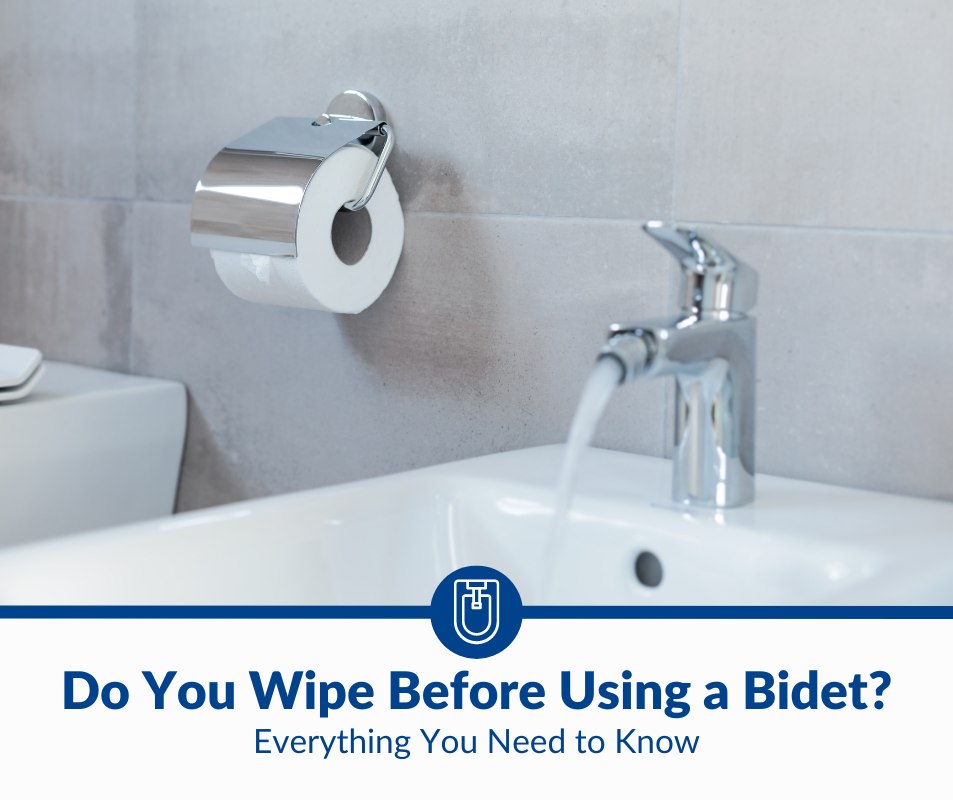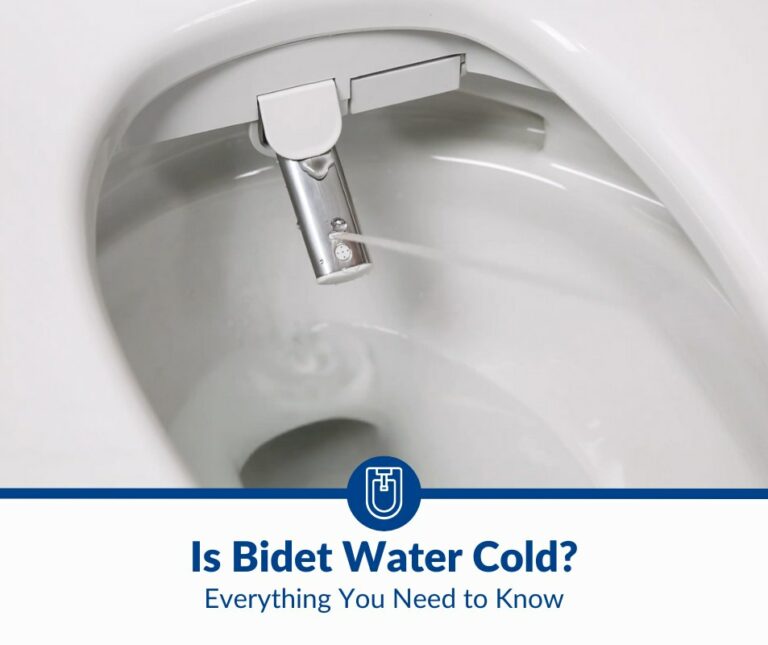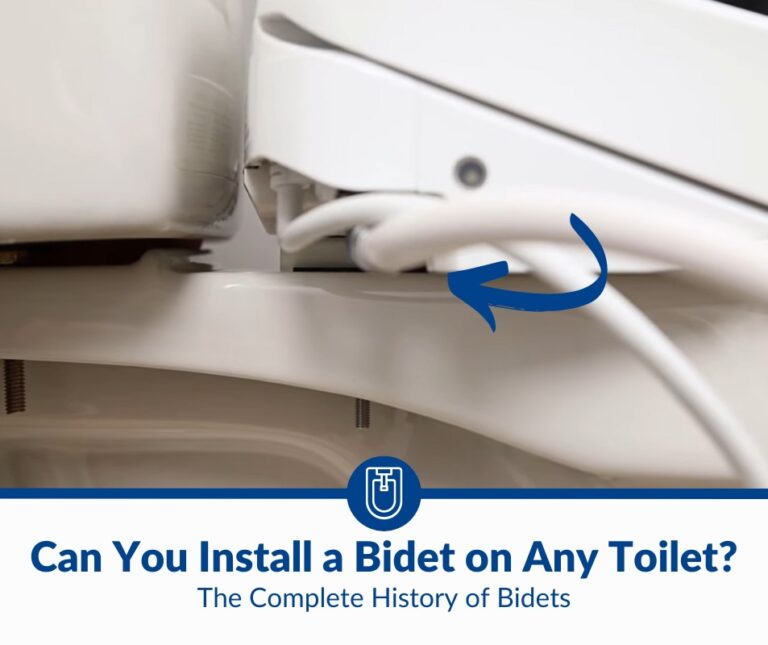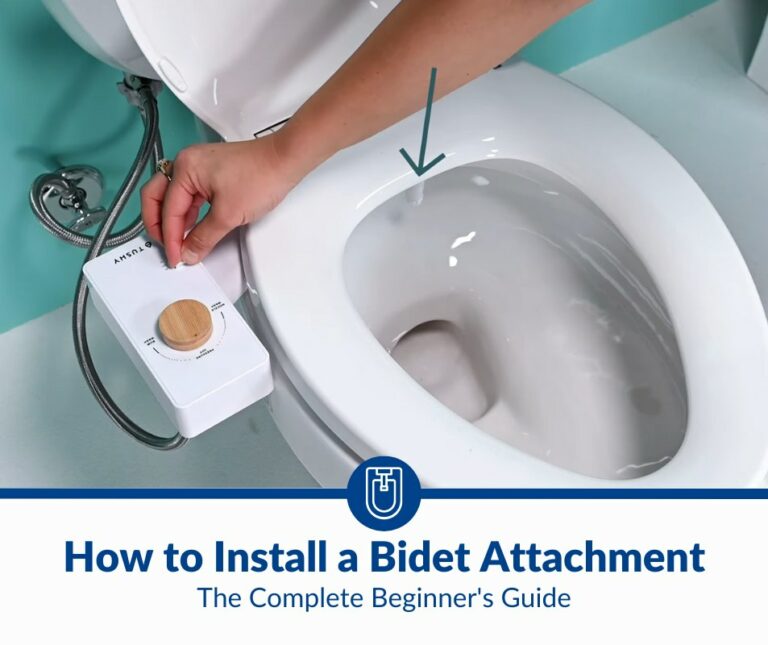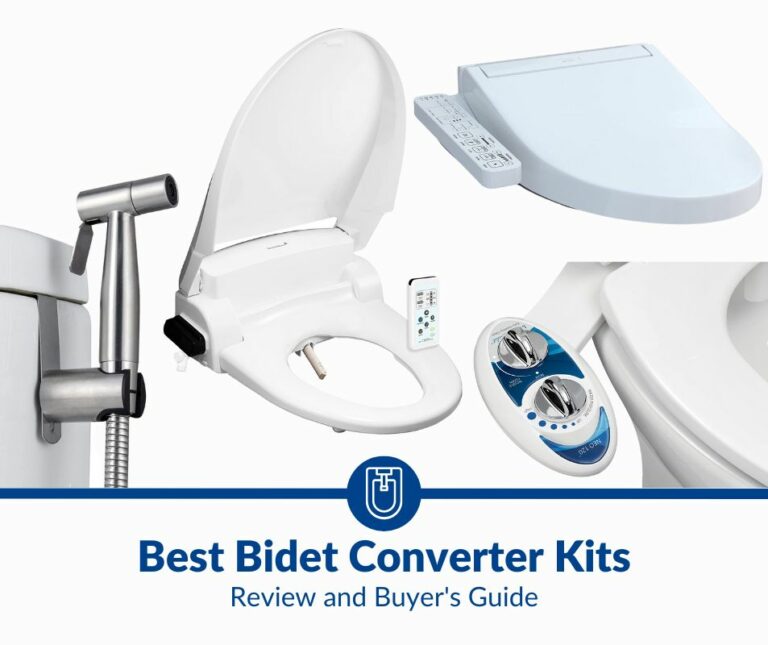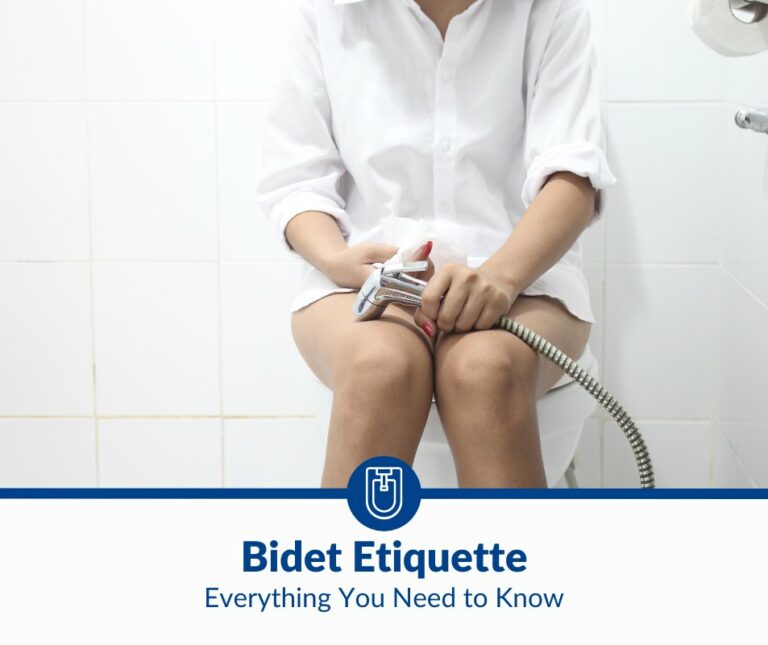Do You Wipe Before Using a Bidet?
Bidets are common in many countries and are becoming increasingly popular in the U.S. These useful fixtures allow you to clean up thoroughly after using the bathroom. But do you need to wipe before using a bidet?
You do not need to wipe before using a bidet if it ejects water at high pressure. But if you are using a “traditional” bidet with only one pressure setting, it is advisable to wipe away any initial mess before using it.
When using a bidet, remember to keep your clothes away from the spray and adjust the water pressure so it’s right for you. In this article, I’ll look at how you can ensure a clean and refreshing experience when using a bidet.
How To Properly Use a Bidet
Use the Toilet
A bidet is meant for use after long or short calls. These fixtures are not substitutes for toilets, as they’re meant to help you clean up better after completing your business.
Whether you wipe yourself before using a bidet is entirely up to you. However, most prefer using bidets after cleaning up with tissue paper. But a good bidet can get the job done and leave you squeaky clean even without the help of a tissue.
Position Yourself on the Bidet
Before using the bidet, adjust your body and clothing so the spray is aimed at your genitals, not your clothes. You can either straddle the bidet, sit on it like a chair, or even stand while using it, whatever is most comfortable.
You can easily adjust the water temperature and pressure via the knobs located near the water outlet. You can either face the controls, which makes it easier to adjust the settings, or face away from the knobs.
Of course, positioning yourself on a bidet can be more troublesome if you have mobility issues. Luckily, there are bidets that have easily accessible controls and safety features.
Adjust the Water Pressure and Temperature
For maximum comfort, you may want to adjust the bidet’s water pressure and temperature before use. The good thing is almost all modern bidets come fitted with adjustable knobs for temperature and pressure control.
The ideal temperature and pressure will depend on your preferences, so it’s important to tweak the settings until you find what works best.
It’s important to make these adjustments gradually. You don’t want to be surprised by water that’s too hot or cold, and you definitely want to avoid jumping up suddenly due to excessively high water pressure aimed at your privates.
Adjust Your Sitting Position
When using the bidet, ensure that the water hits the right spots. You can adjust your sitting position, so the water is directed to where you need it and then adjust the pressure and temperature for maximum comfort.
Although some bidets are equipped with a nozzle that can target different areas, it’s much easier to adjust your sitting position than trying to get the nozzle to stay in place. But some bidets fill the basin with water like a sink, so you can just sit in it and adjust your body until the water is directed to where it needs to be.
Clean Yourself Up
After adjusting the bidet to your desired preferences, press the activation button or turn on the water. Use both hands to spread the water around in a gentle scrubbing motion. Remember that the water pressure can be adjusted, so keep it low and gentle on your skin.
Wipe Yourself or Let It Air-Dry
Once done using the bidet, you can wipe yourself using toilet paper or a clean towel if you have access to one. You can also air dry yourself for a couple of seconds if your bidet has that feature. Either way, it’s important that your private area is free of unwanted moisture.
Clean the Bidet
It’s important to keep the bidet clean after every use. Most modern bidets have a self-cleaning feature to take care of this. However, if your bidet doesn’t have one, you should clean it with some mild soap and water.
How To Clean a Bidet
- Turn off the water supply to the bidet.
- Wipe down any dirt or debris on the surface with a damp cloth.
- Mix some mild dish soap with warm water to clean the bidet’s surface.
- Rinse the bidet with warm water and dry it with a clean towel.
Do not use harsh chemicals or abrasive materials to clean your bidet, as this can damage the surface.
Wash Your Hands
It’s important to wash your hands after using a bidet. This will help keep you clean and also prevent the spread of germs. It’s best to wash your hands after you’re done cleaning or rinsing the bidet. Coat your hands with soap, and thoroughly rinse them under running water for at least 20 seconds, or as long as you can sing “Happy birthday” twice.
How Does a Bidet Work?
A bidet is a plumbing fixture that sprays water against the body and washes away urine, feces, or other waste. Most bidets come with adjustable settings that allow you to regulate the flow of water.
Bidets can also clean areas around the anus, such as rashes and other skin irritations. The water is usually warm, which can help relax the muscles in the area. The used water is usually released into a bowl or drainage pipe.
You can use a bidet as a tissue paper alternative or combine both methods for thorough cleaning. In any case, it’s a hygienic, sanitary way to keep your body clean without using soaps, lotions, or other chemicals.
Although a bidet resembles a toilet, it’s usually smaller and features a jet or nozzle meant to release water at different pressure levels.
When To Use Toilet Paper Before Using a Bidet
It’s not always suitable to use a bidet instead of toilet paper. Here are instances where you’re better off cleaning up before using a bidet.
Diarrhea
When you have diarrhea, it’s best to use toilet paper before using the bidet. This helps avoid transferring bacteria from the anal area to other body parts. The bidet will spray water at a high pressure which can spread bacteria throughout your body.
Diarrhea contains bacteria such as E. coli and Clostridium difficile, which can cause serious illnesses, so it’s essential to ensure these bacteria are not spread to other parts of your body.
Menstruation
If a lady is on her period, it’s best to clean up before using a bidet. This practice helps to reduce the risk of spreading menstrual blood on other surfaces in the restroom and minimizes the risk of infection from contact with contaminated surfaces.
Furthermore, using a bidet can cause discomfort due to the pressure of the water stream. Cleaning up with tissue paper will help reduce the time the bidet needs to run to effectively clean the area.
Limited Warm Water
Some bidets have a set time for use with hot water, and it may not be long enough for a thorough cleaning. In this case, use toilet paper beforehand to wipe away any large or visible particles before using the bidet.
Wiping yourself before using a bidet helps conserve water and keep you comfortable on the toilet. It also reduces the odds of cleaning up with cold water.
Senior Adults
For senior adults, wiping the area with toilet paper is recommended before using a bidet. This ensures that after using a bidet, the area is clean. It may be difficult for seniors to position themselves correctly to use bidets, so wiping first can help ensure they don’t miss any spots.
Using a Public Toilet
It’s advisable to use toilet paper before using a bidet in public restrooms. This helps protect you from any germs or bacteria that may have been left behind by other users. It’s also a good way to ensure your body remains clean.
Never use paper towels or other materials near the bidet, as this can cause clogging and cross-contamination. Also, paper towels in public bathrooms are meant to be used to wipe your hands, so refraining from using them shows courtesy to the next user.
Types of Bidets
There are different types of bidets, and the answer to whether you should wipe before using one will vary depending on which type you’re using.
Bidet Toilet Seats
Bidet toilet seats usually have a built-in nozzle that sprays water or a separate handheld nozzle that can be used for rinsing and cleaning.
The nozzle is typically placed near the base of the toilet seat and usually has a control panel on the side. When using a bidet toilet seat, there’s no need to wipe beforehand, as the water will clean you efficiently.
Bidet Attachments
Bidet attachments are add-ons that attach to the existing toilet seat. They’re typically handheld sprayers that can be used to clean the genital and anal areas thoroughly. No wiping is required as these bidets provide a powerful spray of water.
While some attachments require professional installation, many are simple to set up and come with easy-to-follow instructions. The main advantage of bidet attachments is there’s no need to modify your toilet, so you don’t have to worry about dealing with a messy installation process.
They’re also much less expensive than traditional bidets. However, be sure to check the compatibility of the attachment with your current toilet seat before purchasing.
Handheld Bidets
These are portable bidets that come with a long hose and nozzle to spray water into the genital and anal areas for easy cleaning. This bidet requires you to manually hold the nozzle and direct it toward the areas that need to be cleaned.
You won’t need to wipe yourself after using a handheld device except if you want to dry off the area. Handheld bidets are great for those who travel often and don’t have access to traditional bidets.
Traditional Bidets
Also known as freestanding bidets, traditional bidets come as stand-alone bathroom fixtures installed next to the toilet. They come with a bowl and single nozzle that releases water at high pressure to clean your private areas.
When using a traditional bidet, always wipe before or after the cleansing process. Beforehand, you can use toilet paper to remove any present solid waste. The water stream may not be strong enough to flush away the waste. Afterward, dry off the area.
Caution When Using a Bidet
The bidet is a great invention for personal hygiene and comfort, but it’s important to remember a few safety tips when using it.
- Keep the bidet clean. The area around the bidet should be kept clean. A dirty bidet can lead to a build-up of bacteria and other germs that could cause infections or illnesses. As a general rule, always rinse a bidet before and after use.
- Take extra precautions with a shared or public bidet. If you’re using a shared or public bidet, take extra precautions to prevent cross-contamination of the bidet. It’s crucial to clean public bidets with soap and water (if available) before use.
- Wash your hands after using the bidet. No matter how clean your bidet or bathroom area is, you should always practice proper hand hygiene after touching and using the bidet. Cleaning your hands ensures you don’t transfer the dirt to other areas.
- A bidet doesn’t replace the need for toilet paper or a towel. Although convenient, bidets should not be used as substitutes for toilet paper, especially after use. Failure to dry yourself properly increases the chances of skin irritation and even bacterial infection. Be sure you always have a clean towel or tissue paper to dry yourself after using a bidet.
- Discontinue bidet usage if you experience any discomfort or irritation. Using a bidet should be a pleasant experience, not a painful one. If a bidet isn’t functioning as expected, you can call in a plumber to have a look, especially if the problem persists. Tweaking the bidet settings can also make it easier and more comfortable to use.
Benefits of Using a Bidet
Improved Hygiene
Bidets are known to improve hygiene, especially compared to traditional toilet paper. Toilet papers can bring in tiny particles from feces, bacteria, and viruses that can remain on your skin.
Bidets spray a steady stream of water to help flush away unwanted particles. Water is more capable of cleaning those particles away than traditional toilet paper, resulting in better hygiene.
More Environmentally Friendly
Bidets are also more eco-friendly than tissue paper as the latter requires a lot of resources to manufacture, and the disposal process isn’t eco-friendly either. Tissue paper is manufactured from wood pulp, which contributes to the long-term destruction of forests. Bidets use much less water than toilet paper and therefore don’t have the same environmental impact.
Save Money
A bidet can help you save money, especially when you factor in toilet paper costs. With a bidet, you’ll no longer need to buy toilet paper, which can be expensive, especially if you’re buying premium brands. You’ll also save yourself from spending money on wet wipes or other paper-based products that you may have relied on before. And if you’re a business owner, think about the money you can save on restocking the bathroom with toilet rolls.
Easier To Clean
Cleaning up after using a bidet is much easier than cleaning up after using toilet paper. With a bidet, you can just rinse off the area and flush, making cleanup a breeze. Plus, many bidets now come with a warm air dryer feature that dries you up to leave you feeling extra fresh and clean.
Toilet paper requires more scrubbing and scraping to get the job done. What’s more, the results may not always be as clean as when using a bidet. A bidet rinses you up with high-pressure water, which is enough to leave your privates squeaky clean.
Comfort
Bidets are a lot more comfortable than toilet paper. These handy attachments can help soothe skin irritation, such as itching and rashes caused by friction from toilet paper. The warm water used in a bidet is gentler on your skin and helps to reduce the chance of irritation.
Bidets can be especially helpful for those with sensitive skin or certain medical conditions. They can also help to reduce the chance of hemorrhoids and other common issues caused by strain from wiping.
Moreover, the air drying feature in most modern bidets allows for a more comfortable cleaning experience. You don’t have to use tissue paper to dry yourself, which helps reduce irritations and the risk of infections.
Final Thoughts
Wiping before using a bidet is not necessary, but you may want to do so to remove any solid waste before using the water stream. Besides allowing for a thorough cleaning, bidets are also comfortable and much more convenient than toilet paper.
A bidet can be a great addition to any bathroom as it allows you to keep your genitals clean without the risk of irritation. Remember to clean up the bidet before washing your hands every time after use.

